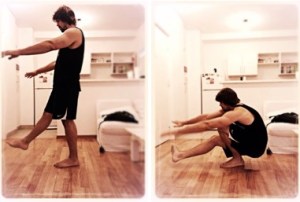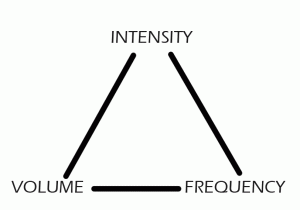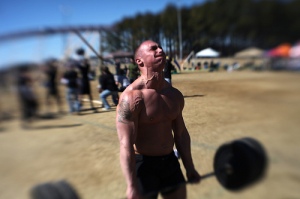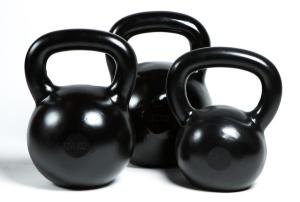The many ways to change things
There’s many changes you can do to your regular workouts, from subtle changes to more drastic measures. You can change
- Exercises
- Rest periods
- Frequency
- Volume
- Intensity
Why you should vary your training
There are several reasons why you should change things up in your training. Basically, you’ve adapted to what you’re doing, you’ve plateaued or you’ve become bored.
You’ve adapted
You’re not getting the stimulus you need from what you’re doing. You should change it. Not drastically, but enough to provoke new growth.
You’ve plateaued
Time to change. If things are not moving forward then they’re moving backwards. Go for a variant of the exercise, or change one of the variables. Maybe even take a longer rest from this type of work. There are many ways to bust a plateau.
You’ve become bored
This one’s tough. This one calls for drastic changes. If you’re bored with your training you should revise your goals first. If you’re still aiming for the same things then maybe change the way you’re doing it drastically. Remember to have fun!

Goblet squat, one of the best beginner squats in existence. Photo by US Army Central
Why you shouldn’t change your training
There’s also many reasons why not to change what you’re doing.
Too much variation will lead you no-where
Remember to change things up smartly: changing too much too often will lead you no-where. You won’t adapt to the stimulus enough to become (insert goal here).
Muscle confusion is not really a thing
I like to say that if you confuse your muscles too much then they won’t know what they should do! Of course I exaggerate, but I do believe that they won’t know what to adapt to, hence, they’ll give up and simply not adapt at all. All that you should be focused on is the goal at hand. (BTW, of course you’ll never plateu if you’re constantly confusing your muscles, basically because you’ll never get strong enough to plateau in the first place!).
How to vary the correct way
As the title conveys, doing the same but different has great results, you’ll keep getting better at what you’re doing for one. Always remember to keep your goals in mind when you’re doing this.
Changing intensity
Going heavier or lighter will change the type of adaptations your body will go through. Going lighter will get you better rested, and building back-up will get you stronger. Sometimes screwing volume to get some real heavy work done will get CNS jacked and yourself stronger in the short run.
Changing Volume
Adding reps, reducing reps, adding sets, reducing sets, or sometimes both. This may be the ticket to bridging between where you are and where you want to be.
Changing Frequency
As I said in another post, doing a little every day can get a long way. I like HFT. It helps me improve by greasing the groove. Getting better at the movement allows me to get stronger in the movement, and to get more efficient at lifting certain ways. (Also, the fabled farm-boy strength comes from daily manual labor, and usually not to the max).
Changing the exercises
This is what we do when we go through exercise progressions (and it’s not exclusive to bodyweight). Going for similar, harder exercises is a great way to keep improving strength. Likewise, going for easier variations helps you focus on the weaknesses of your forms, put more volume and get a good rest. You can look at variations for bodyweight exercises here, here and here. But, for an illustrative case, you could first master the goblet squat – Front squat – Box squat – Back squat (See, there are ways to make this variations with weights :D).
All of this will depend on your goals of course. I cannot stress this enough.
How I vary my workouts
My routine is mainly consistent. I have my goals and change things accordingly. Right now I’m quite focused on getting down the freestanding handstand, front lever, back lever and V-sit. I’m going through exercise progressions and regressions (changing the exercises accordingly).
So, for handbalancing I’m doing as Coach Sommers dictates in Handstand One, for all other exercises I’m following Steven Low’s Overcoming Gravity (Amazon affiliate link – It’s a great source of information if you’re into bodyweight training)
Motus Virtute
















